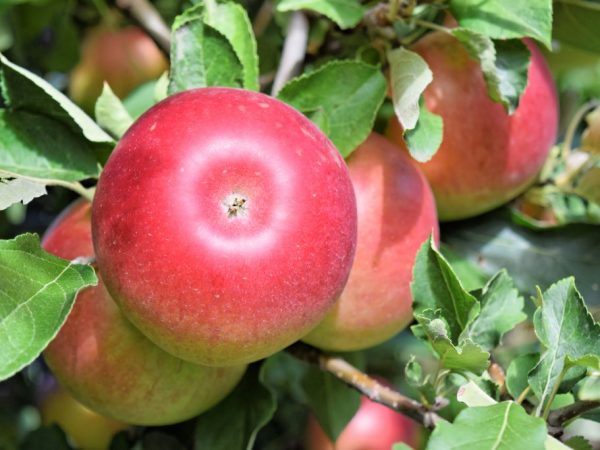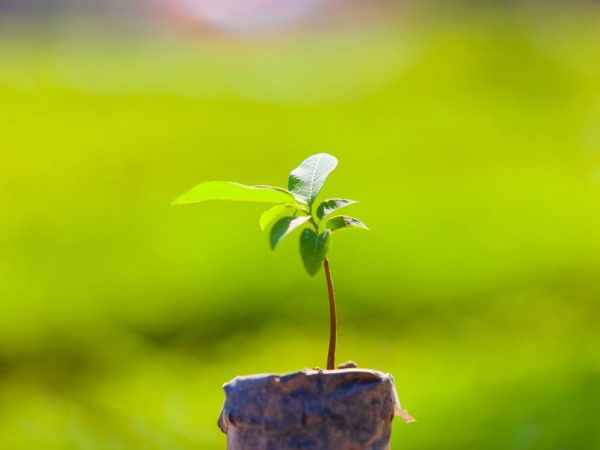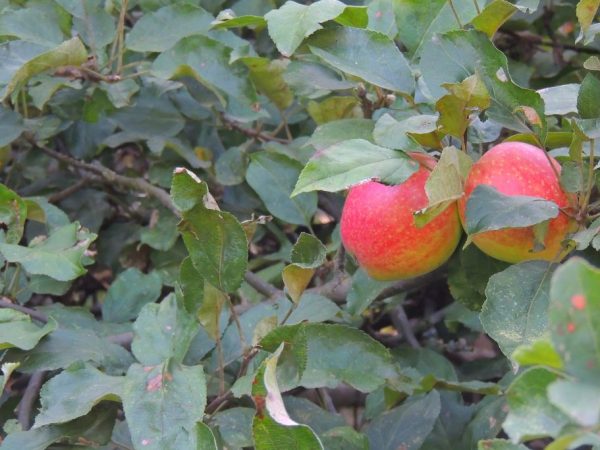Growing an anise apple tree
The apple tree Anis comes from the Volga region, where it is popular to this day. It has many varieties and is widely used not only in its native land, but also in the vastness of all of Russia.
- Varieties of varieties
- Purple
- Scarlet
- Sverdlovsk
- Striped
- Characteristic
- Tree and fruit
- Chemical composition
- Taste
- Yield
- Pollination
- Winter hardiness
- Disease and pest resistance
- Sapling selection
- Landing
- Landing technology
- Care
- Watering
- Fertilizers
- Pruning
- Pest and disease control
- Preparing for winter
- Harvesting and storage
- Subspecies and variants
- Features of cultivation in different regions
- Gardeners reviews

Growing an anise apple tree
Varieties of varieties
There are several main types of culture that are in great demand today. There are differences and certain similarities between them.
Purple
The description suggests that the apples of this variety are distinguished by a beautiful color, which provides them with good presentability. They are also characterized by their transportability. Fruits are large in size. The buds are painted in a beautiful deep pink color.
The purple look has high winter hardiness. Crops are regular, appear 4-5 years after planting. The crown is round with dense foliage.
Scarlet
This is the most famous subspecies, it belongs to the summer varieties. It is not picky about weather conditions, has a high yield and is a long-liver. This species is common in the north and east of the Volga region.
The fruit tastes sweet and sour and juicy. They are medium in size, yellowish in color. The buds are characterized by pink color with light green notes. This variety is extremely susceptible to powdery mildew.
Sverdlovsk
The subspecies belongs to the variety of autumn apples. Its fruits are resistant to low temperatures and look great. The only drawback is poor disease resistance, especially scab.
The apple tree Anis Sverdlovsky has yellow fruits with a bright blush. The tree has brown shoots and pink buds. Fruits have a pleasant sweetish taste with sourness. The apple pulp is distinguished by its juiciness and tenderness.
Striped
This variety grows in all regions. But the time of harvest depends on the place of its cultivation: the warmer the climate, the earlier the apple tree bears fruit. Like other varieties, it is resistant to low temperatures and dryness, and has a high yield.
Differs in immunity against fungal infections. The disadvantage is that the harvested fruits are not stored for a long time.
Green apples with red stripes. No special care of the crop is required.
Characteristic
To know the features of this variety of apple and its fruits, you must first familiarize yourself with its description.
Tree and fruit

Fruits contain a lot of vitamin C
The tree is medium-sized. In the early periods of life, apple trees have a pyromid-shaped crown, which later becomes spherical. The sprouts have almost no leaves.
The flowers are white with a slight shade of pink, of medium size. The leaves are rounded green.
The fruits are firmly attached to the branches. Light yellow apples of medium size. The weight of one fruit is 100-120 g. They can have a different shape - round or turnip. The fruits are characterized by a rather sharp aroma.
Chemical composition
Anise apples are rich in ascorbic and tartaric acids, P-active elements, fiber and pectin. They are also characterized by low calorie content.
Taste
The description indicates that the fruits of this variety have a pleasant sweetish taste with sourness. The pulp is juicy and soft, aromatic.
Yield
Apple trees are famous for their high yields, but they begin to bear fruit 3-5 years after planting. On average, an adult apple tree produces 300 kg of apples.
Pollination
The Anis apple tree does not have the ability to self-pollinate, therefore it is recommended to plant Belfer-Kitayka, Chernenko, Antonovka, Borovinka or Yandykovsky varieties next to it.
Winter hardiness
The frost resistance of this variety is excellent, but the tree does not like an arid climate. Anise is adapted to sharply continental conditions.
Disease and pest resistance
Representatives of the variety do not differ in immunity to many diseases and pests, but at the same time apple trees can boast of resistance to fungal infections.
Sapling selection
The purchase of a seedling is extremely important, so it should be treated with special attention. When choosing a young tree, keep in mind the main points:
- the age of the seedling. Choose those that are 1-2 years old;
- trunk. The specimen you choose should have up to five branches. Also pay attention to the leaves. It is good if there are unopened buds on the branches - a seedling with foliage does not adapt well to a new place;
- the root of the tree must be in good condition. If this is not the case, it is better not to make a purchase;
- pay attention to the bark. She must be healthy;
- the height of the seedling you have chosen should be about 1.5 m;
- in no case buy young trees in non-specialized places.
Landing

Choose a sunny place for your seedling
Anise apple tree is planted in the beginning - mid-autumn, not later. If you do not have time, it may not take root at all. For planting, choose places filled with light; in the shade, the seedling will grow poorly and bear fruit.
The optimal period for disembarkation is a month before the onset of frost.
Landing technology
For the correct planting of an apple tree, you must:
- a couple of days before planting, place the seedling in water - its root system should not be dry;
- the pit does not need preliminary preparation. Its depth should be at least 0.5 m, and its width - 1.25 m;
- fill the pit with manure (30 kg), mineral fertilizers (600 g) and ash (1 kg);
- the root collar of the seedling should be located a few centimeters above ground level.
Care
Watering
The tree needs regular, abundant, but not over-watering. During periods of heat and drought, the best option would be to moisten the soil at the base of the tree in the amount of 2-3 buckets per day. In conditions of low air temperatures, watering can be done less often - up to 2-3 times a week.
Fertilizers
Anise apple fertilizing consists of 25-35 kg of rotted manure, 100 g of wood ash and 100 g of superphosphate. It is important to mulch and loosen the soil. The latter process should be carried out regularly in hot weather.
Pruning
There are two types of pruning:
- thinning - pruning dry, diseased or broken branches. If the branch is thick, it is better to cut it in parts. The stump should be as small as possible;
- shortening. This is necessary to improve the growth and condition of the tree.
Pest and disease control
The variety has no resistance to diseases and pests, so prevention and treatment should be taken seriously. Against aphids, the tree is sprayed with Nitrafen or fungicide. Tincture of tobacco saves from leaf rollers.
A decoction of wormwood copes with the moth. Pest control is facilitated by digging the soil under the Anise apple trees in autumn and spring and treating the trees with pesticides.
Preparing for winter

The tree needs preparation for the winter period
This work includes several processes:
- pruning;
- mulching (with needles, peat, humus or sawdust);
- watering;
- spraying;
- top dressing with organic and mineral fertilizers;
- garter;
- insulation (snow copes well with this, it is thrown under a tree - the more, the better - and trampled down);
- cleaning of fallen leaves;
- prevention against pests and infections (to protect your trees from bark beetles, make a feeder: birds are the best pest fighters).
Harvesting and storage
Harvesting is in late summer - early autumn. Do not forget that each subspecies has its own harvesting period: Anis Aly - at the end of August, Sverdlovsk - in mid-September, and Anis Polosaty's apple-tree harvesting falls on the end of September.
It is necessary to collect all the fruits when harvesting, otherwise they will crumble and deteriorate.
Anise apples do not differ in storage time. The maximum period for this is approximately three months. At the same time, the storage place for the fruits should be well ventilated, cool (temperature 0 ° C) and moderately humid.
Subspecies and variants
In addition to the well-known spherical and conical crown shapes, there is also a creeping crown. Such an apple tree is common in the vastness of Siberia, the Urals, Kazakhstan and the Far East. There are such types: Flat spindle, Krasnoyarsk two-armed and Melon stlanets and Minusinsky semi-flat.
Features of cultivation in different regions
Their yield depends on the region where apple trees are grown - the warmer, the earlier the tree will begin to bear fruit. In general, the climate has no influence on the method of tree care, but the variety is susceptible to high temperatures and dryness, so when growing an apple tree in warm conditions, more attention should be paid to watering it.
The variety is popular in the Urals and Siberia. It can also be found on the territory of the Non-Black Earth Region.
Gardeners reviews
Many gardeners are delighted with this variety. Even old apple trees growing in the plots continue to bear fruit, because the tree belongs to durable crops. In leaving, it is picky, which is a huge plus.
An important point is the storage of the crop. Anise apple variety does not lie for more than 3 months. The fruits are tasty, aromatic and suitable for preservation.

